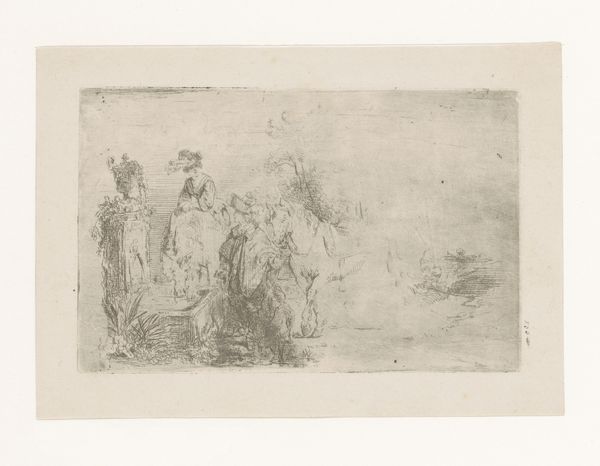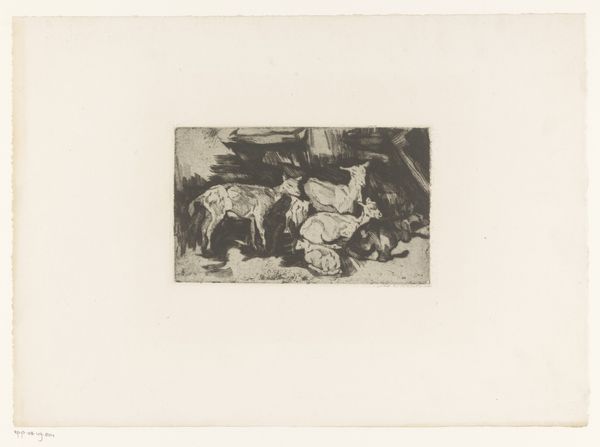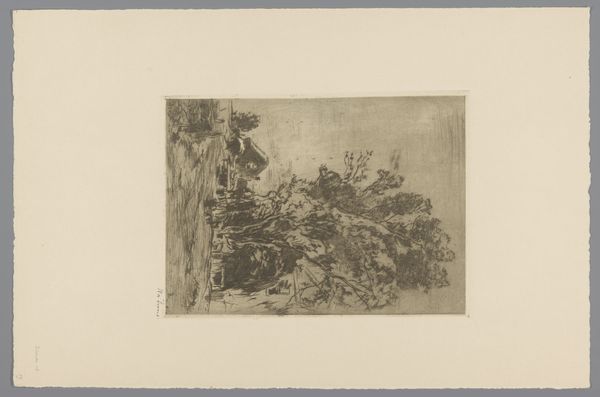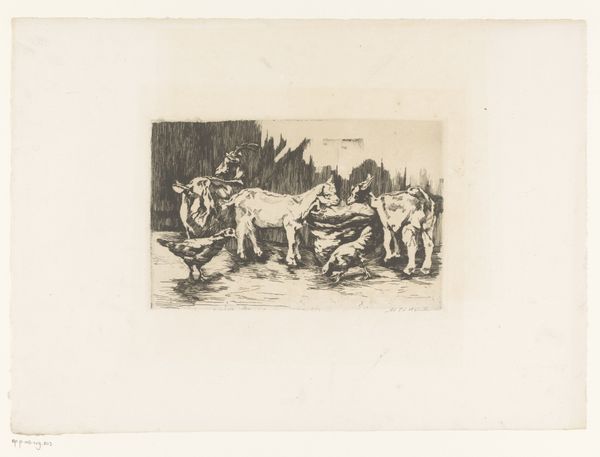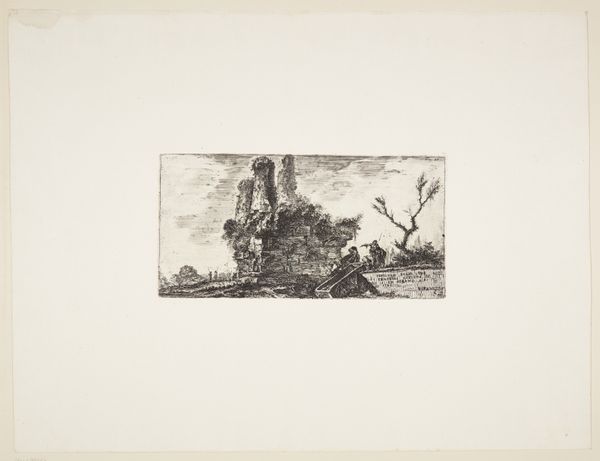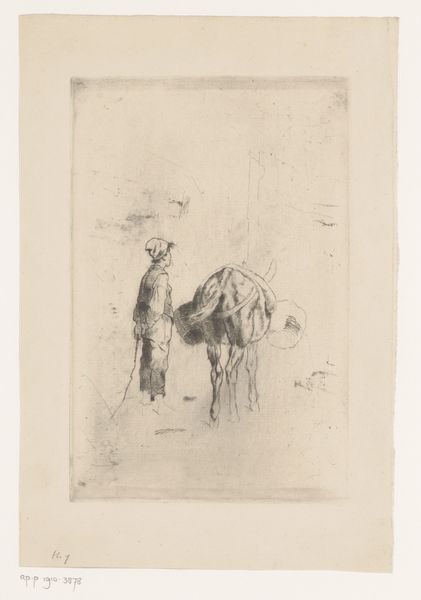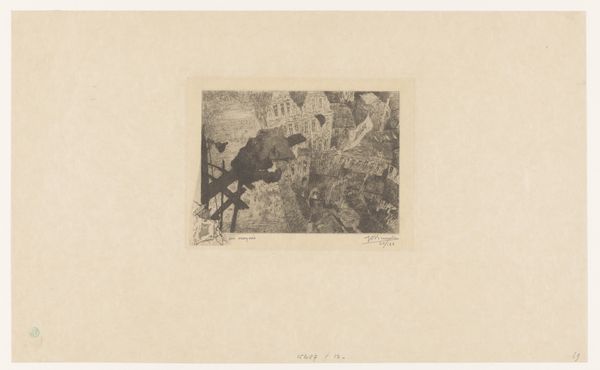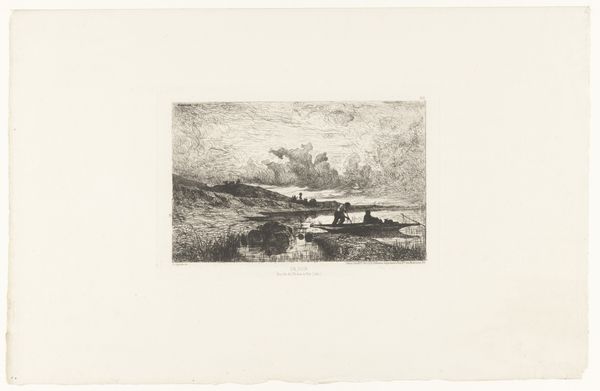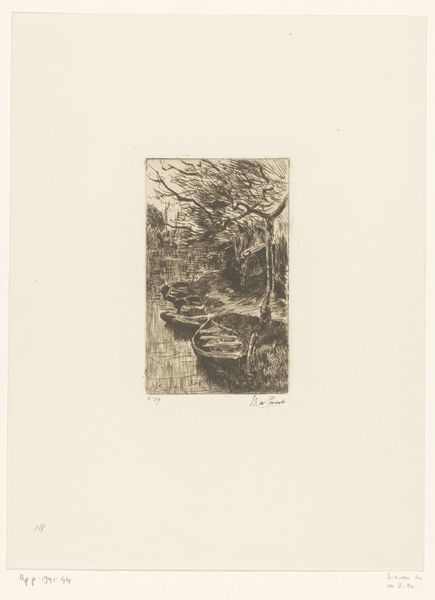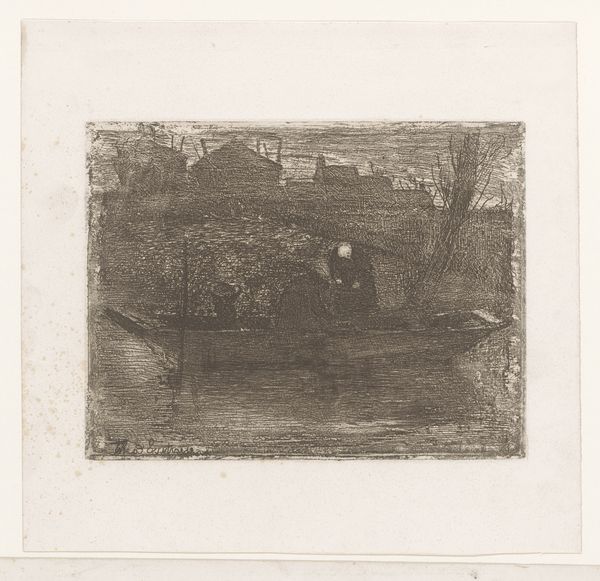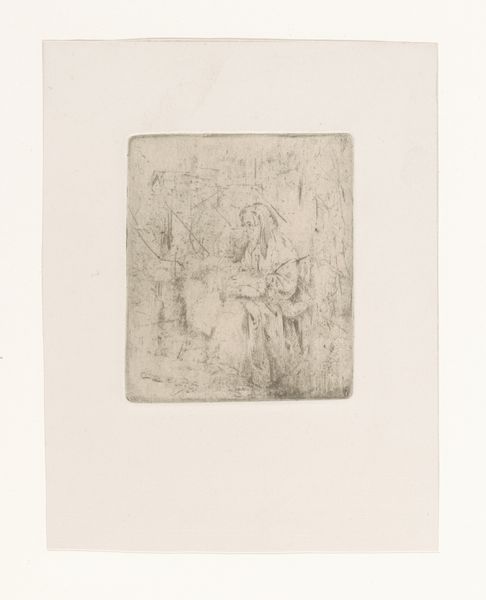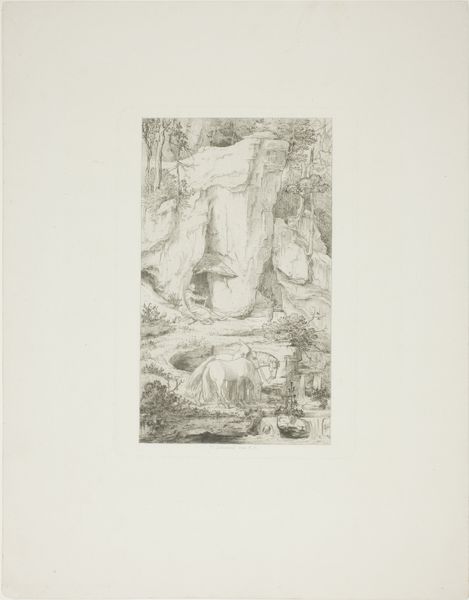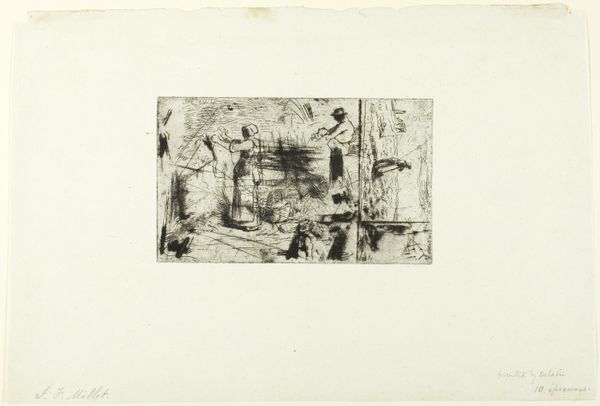
drawing, etching, pen
#
drawing
#
etching
#
landscape
#
pen
#
genre-painting
#
history-painting
#
realism
Dimensions: height 86 mm, width 131 mm
Copyright: Rijks Museum: Open Domain
Editor: This is "Gesprek bij een drinkbak" by Adrien Joseph Verhoeven-Ball, made sometime between 1834 and 1882. It's an etching and pen drawing depicting people with horses by a trough. I'm really drawn to the rough texture and how it evokes a sense of everyday life. What jumps out at you? Curator: The materiality of this piece speaks volumes. Consider the etcher's labor, the deliberate scratches and bites into the metal plate. Notice how the artist’s use of pen and etching doesn’t try to mimic reality perfectly; instead, it emphasizes the *process* of creation. The seemingly mundane scene is elevated precisely because we see the artist’s hand at work, mediating the image through specific, reproducible means. How might this relate to class distinctions present in the 19th century? Editor: That's a great question. Were etchings like this intended for mass production, perhaps making art more accessible outside of elite circles? Curator: Precisely. While an original drawing would remain unique and precious, etching offered the *possibility* of wider dissemination. The level of finish, the choice of subject matter, and even the dimensions of the work speak to the artist's understanding of the marketplace and their potential audience. Consider how realism also focused on scenes that elevate ordinary folks. Can the value then reside less on the rarity, skill, or established artistic traditions and more on the capacity to create images in a way more readily available? Editor: So, it's not just the *what* of the image but *how* it was made and distributed that's crucial? This is giving me a totally new way to look at art! Curator: Absolutely! And how these very choices challenge our assumptions of what is considered "high art" at all. Editor: Thanks. I learned a lot about this. I'll need to reflect upon that more deeply.
Comments
No comments
Be the first to comment and join the conversation on the ultimate creative platform.
